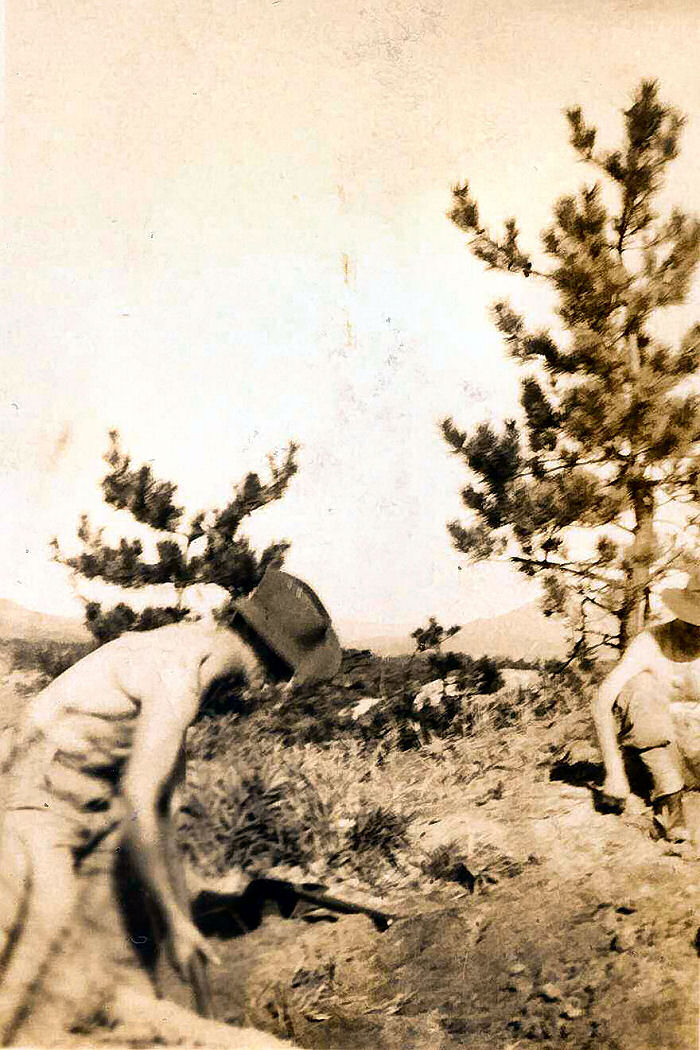 Digging as usual.
Digging as usual.Self 1951 Digging was the lifestyle of ALL the frontline soldiers in Korea. You dugyour living quarters, i.e. foxhole or bunker, your fighting pits, miles oftrenches when the war became static, and usually all of the above for theHQ mob who were too 'delicate' for such tasks. You never saw an overweight front line man, and you wouldn't find anyonemore fit than they. This photo is obviously taken as a fighting pit isbeing dug, the Australian practice was to make them as narrow aspracticable; wide enough and long enough to fight from. Certainly not toolarge as that only made a larger target for 'incoming mail' or grenades tofall into. The front of the pit had a sandbag bulwark built on most occasions.This held it firm from artillery exploding nearby, also held it togetherduring the rainy season. There would be a suitable sized hole cut into thefront of the pit, about waist high. This was for grenades and extraammunition and magazines if attacked. The depth was dug to suit theoccupants at that time, you needed to have maximum protection but also room to shoot when 'visitors' came calling. As you could imagine there were many a sore and blistered hand amongst the newcomers, being in the front line seemed to ease the pain considerably however. Definitely a case of get your head and arse down out of sight, and hope for the best. Considering 99% of our positions were on rocky mountain sides, the ground wasn't conducive to shoveling a quick, neat hole. The middle of winter was the horror time though, when we had the dire misfortune to shift from a comfy place we had already dug, to a virgin hillside with frozen ground. I don't know much about this perma-frost I have heard of, but the ground in a Korean winter was like perma-concrete. There was literally no way an army issue pick could penetrate the surface, for all the force behind your swing, the blasted pick just bounced straight back at you. Oh the tears we shed. By the grace of a senior officer someplace, a squad of engineers would be sent to help us and they 'broke' through the surface using beehive explosive charges. That still left plenty of back-breaking digging to be done, but at least the ground below was cracked enough to work. The joys of an infanteer. Ron |
|
|